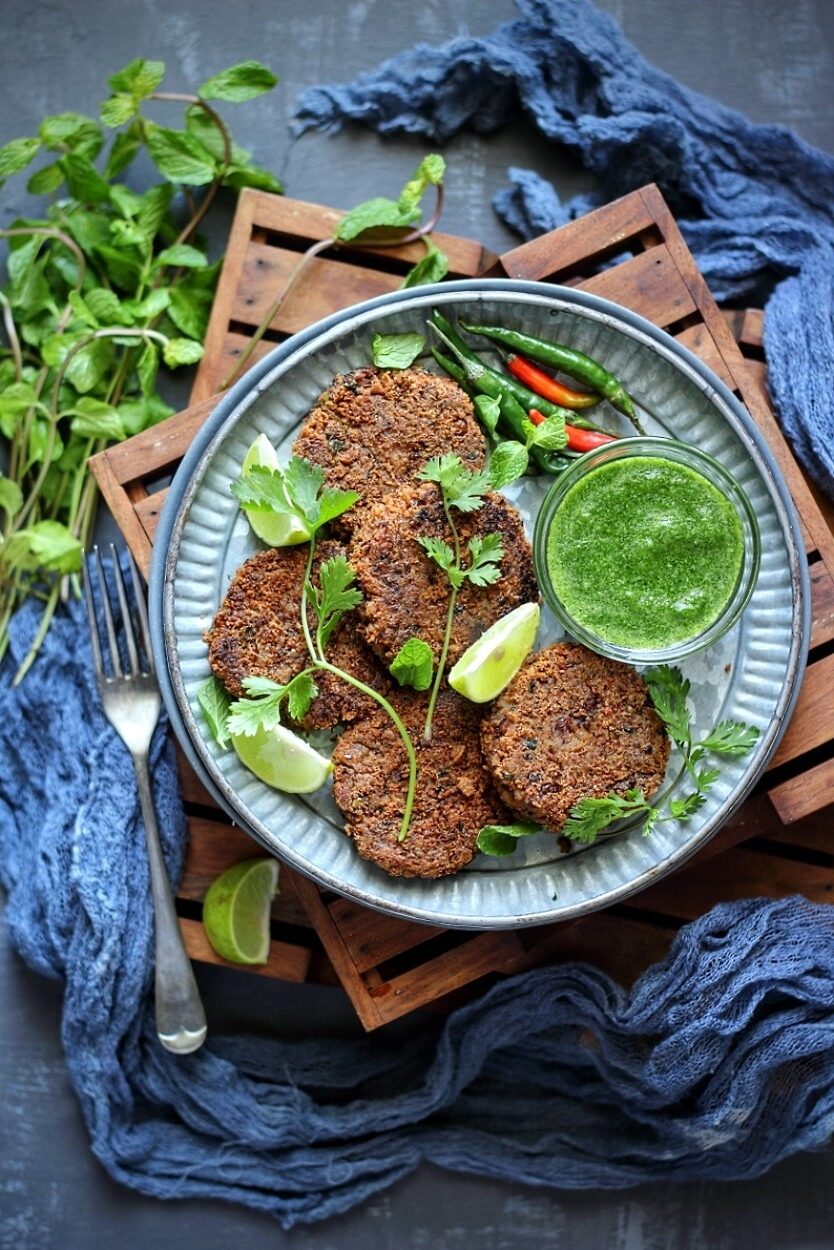
The first tryst I had with kulthi dal or horse gram lentils was a decade back when someone in the family had a case of kidney stones and we were advised to provide him with barley water and horse gram lentils water (soaked). And it really helped the case since surgery was not advised, due to some reason. I searched more about this lentil and learnt that it is popular in many regions of India. It is consumed in the Jammu region as a khatti dal (sour lentils).
The lentil is known by various names such as kulth, kulath, kuleeth, kulith, kulthi, hulthi, kollu, hurali, gahat. Since it has a robust texture it turned out to be a nice option for making these kebabs / patties. These kebabs are packed with flavour, are super healthy and also gluten free and vegan.
You can enjoy them for a snack with chai or serve them as a appetisers or as a side dish to supplement your pulao or veg biryani. They can be turned into a meal by wrapping them inside a flatbread along with chutney, some salad, pickled onions and hot mayo. Or serve them along some quinoa salad to pack for your lunch. You can call them vegan or vegetarian galouti kebabs.
Although once you have the kebab mixture ready, you can serve them in minutes but they do require some pre planning since the lentils need to be soaked overnight in water. But do give them a try coz they are very flavourful and nutritious. Learn more about their nutritional value here.
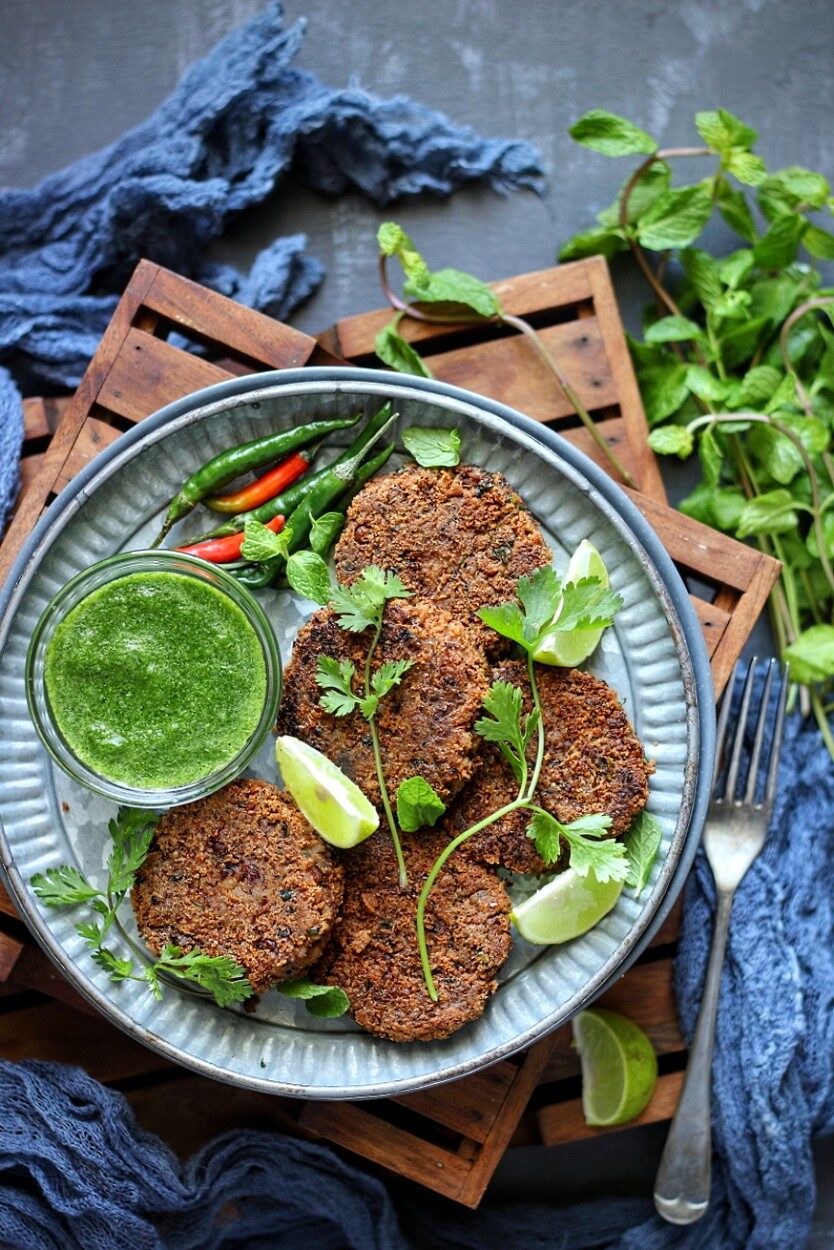
¾ C Kulthi Dal
A pinch Hing / Asafoetida
1 large Tej Patta / Bay Leaf
¾ tsp Salt
2 C Water
¼ C Chana Dal
3 Laung / Cloves
1 Moti Elaichi / Black Cardamom
A pinch of Dal Chini / Cinnamon
6 – 8 Sabut Kali Mirch / Black Pepper Corns
1 pinch Green Cardamom Powder
1 tbsp melted Ghee (Oil, for vegans) plus extra, to fry the kebab patties
½ tsp Jeera / Cumin Seeds
1½ tsp finely chopped Ginger
2 tsp finely chopped Green Chillies
2 tbsp finely chopped fresh Coriander
½ tsp Red Chilli Powder
½ tsp Amchur Powder
¼ tsp Salt
3 tbsp Poha / Flattened Rice
1 medium (approx. 130 gm) Boiled Potato, grated
Green chutney to serve (or any chutney of your choice)
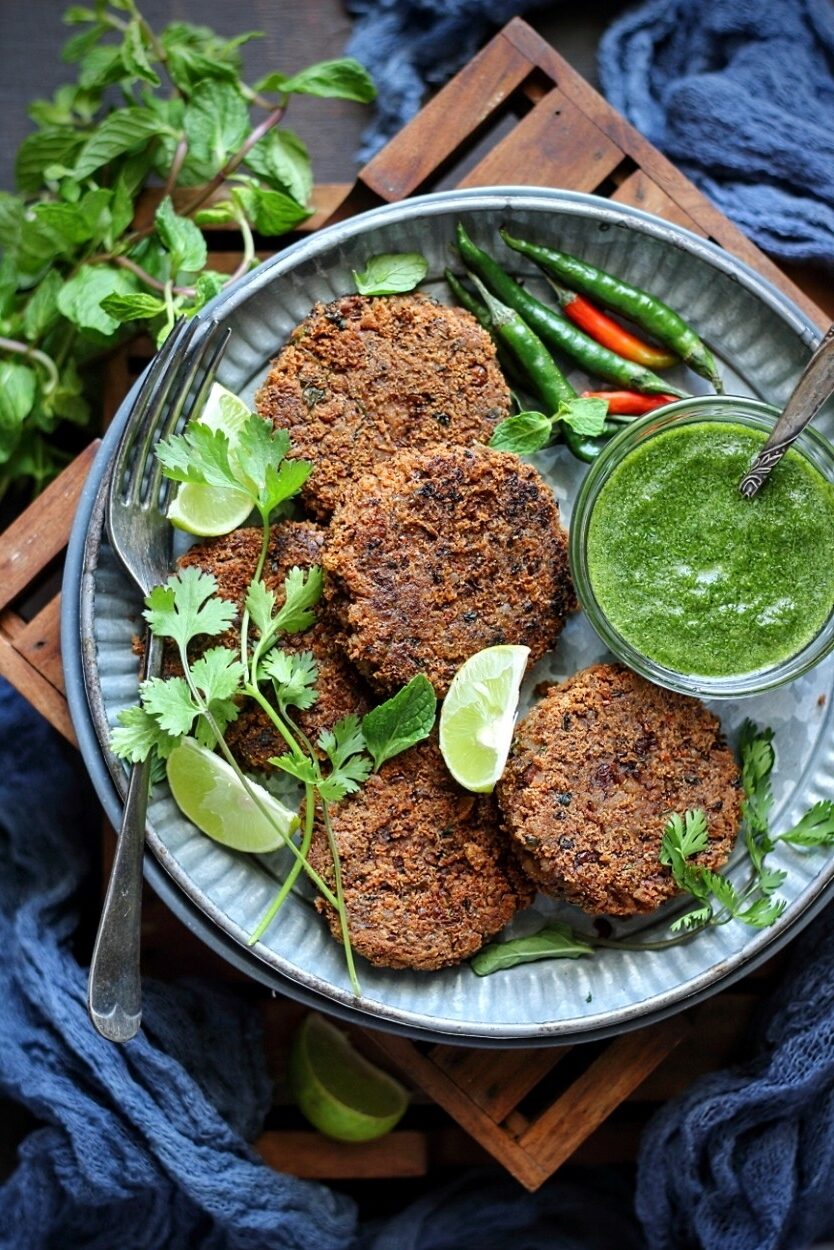
Wash the dals, separately, twice and drain the water. Soak them separately in enough water and set aside for six to eight hours. I prefer to soak them overnight.
Discard the water and transfer the kulthi dal in a pressure cooker along with asafoetida, bay leaf and salt. Add two cups of water and pressure cook the dal till two pressure whistles are released. Switch off the heat and let the pressure release on its own.
Open the pressure cooker and add the chana dal (after discarding the water in which it was soaked). Pressure the cook the dals together for another pressure whistle and let the pressure release on its own. I prefer that the dal is cooked yet it holds slight resistance when you try to mash it between your fingers. By no means should it be mushy
Strain the dal in a large sieve and allow it to sit for half an hour to forty five minutes tossing it once or twice in the sieve.
Meanwhile crack open the black cardamom and extract the seeds from the pod. We shall be using only half of these seeds.
Lightly roast the black cardamom seeds, cloves and black peppercorns. Once done, grind them to a powder in a mortar and pestle. Add the green cardamom powder and cinnamon powder to the spice mix and set it aside.
Heat the ghee in a frying pan and add cumin seeds. Once they begin to crackle, add the ginger and fry for a ten seconds. Add the dals and roast them on high heat for two to three minutes to get rid of excess moisture.
(The roasting time will depend on well the dal is cooked. If your dal is over cooked or is mushy, you will have to increase the roasting time to get rid of excess moisture)
Once you are done with the roasting, smash the dal using the back of a ladle or spatula. If you are able to mash it easily, remove it from heat and set aside to cool. (However, if there is moisture, you need to roast it further.)
Soak the flattened rice / chiwda / poha in a cup of water and set aside till it softens. (be careful not to ‘over soak’ as the poha will absorb a lot of water and turn very mushy) Drain the water and squeeze the poha to get rid of extra moisture. Set it aside.
Coarsely grind or mash the dal and add the spice mix, salt, red chili powder, amchur, finely chopped green chillies and coriander. Also add the poha and grated potato. Mix everything well, (almost like you are kneading it) so that everything binds together well.
Divide the mixture in twelve to fourteen equal sized balls and roll and flatten them to the size and thickness you like and shallow fry them in ghee or oil. Since everything is already cooked, fry the kebabs on high because all we need is a nice golden brown colour and a bit of texture on the kebabs. Once both the sides of the kebab are golden brown in colour, remove them on an absorbent tissue.
Serve with chutney of your choice. We mostly prefer the green chutney and sometimes some mayo to which we add some chilli sauce.
Yield – 12
Note – If you feel like the mixture is not coming together, increase the amount of potato or you can use 2 – 3 tbsp of bread crumbs.
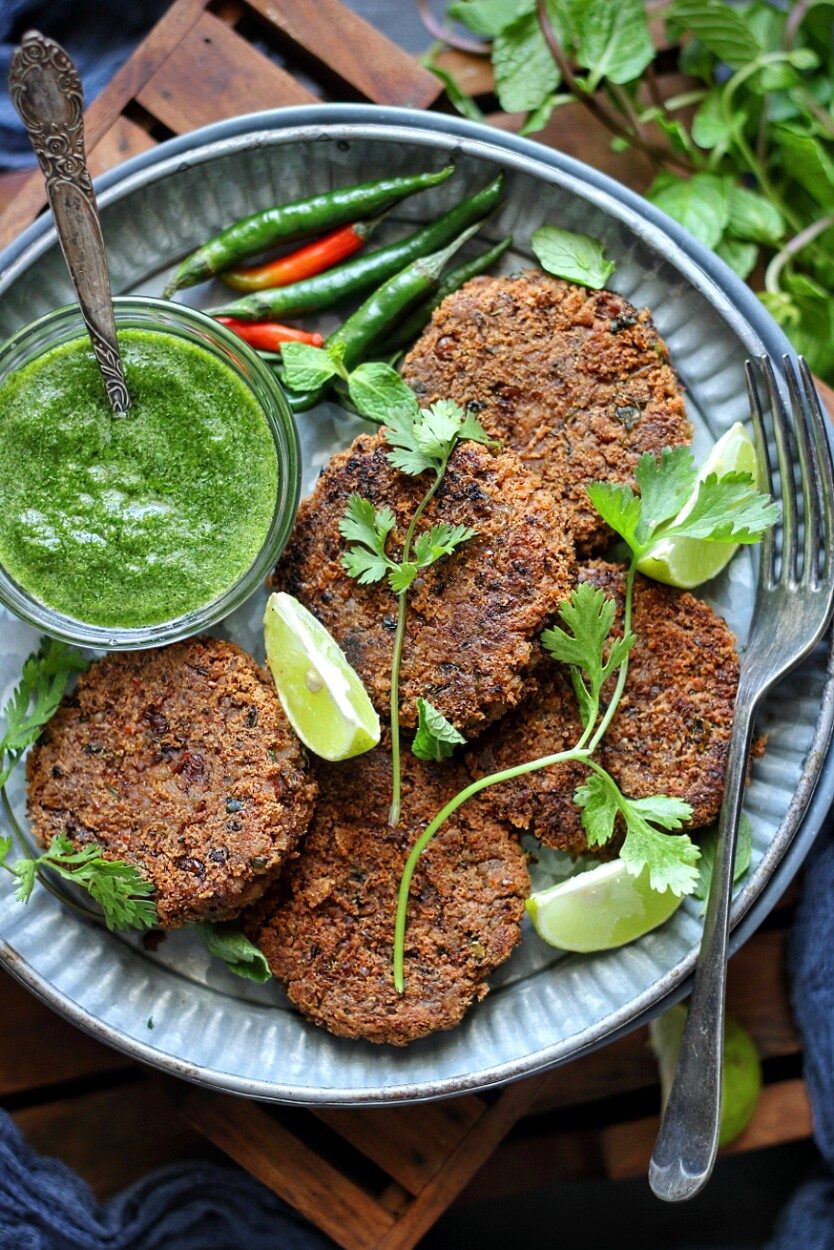
Thank you for your visit and see you soon again, with another exciting recipe!

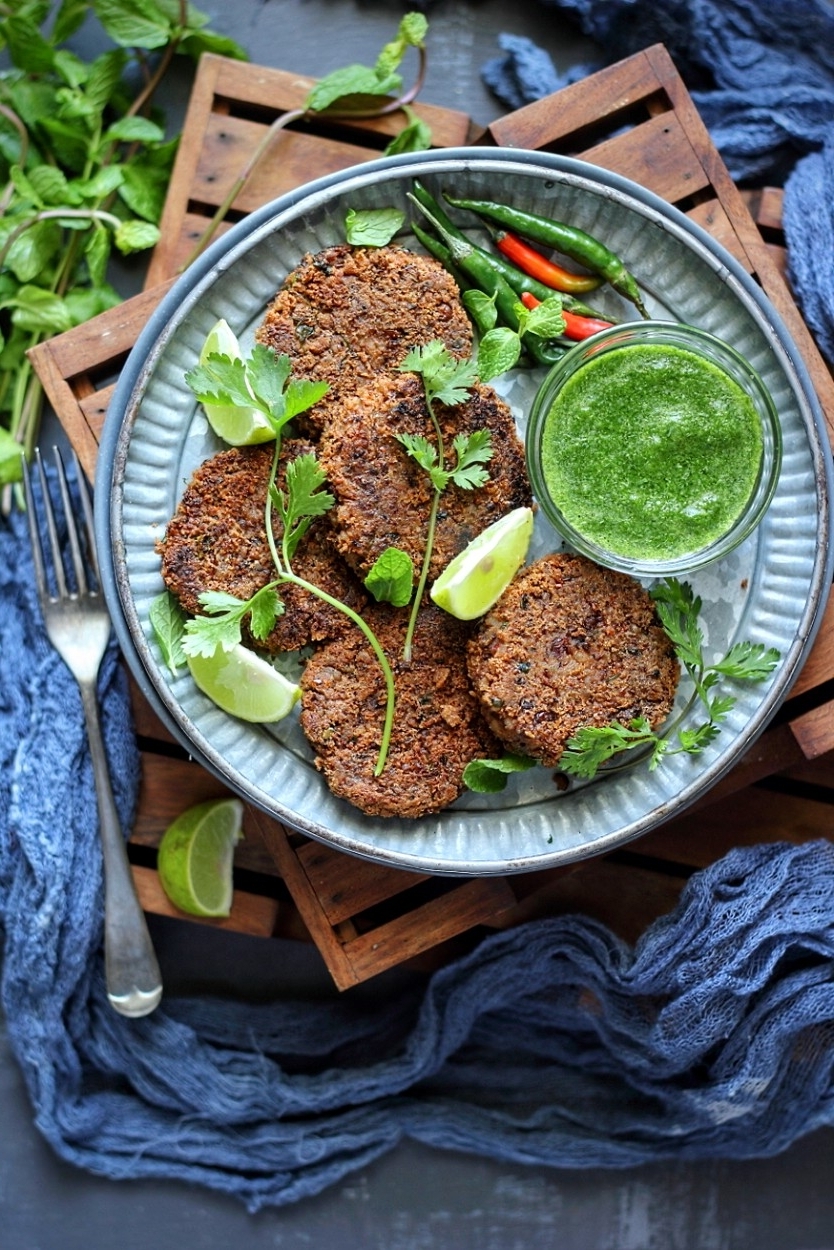
They look so beautifully golden brown and crispy!
Thank you Angie 🙂
These look so crispy and delicious! Super healthy too!
They are indeed! Thank you so much 🙂
I’m not familiar with this type of lentil, but I do want to see if I can find it around here! These kebabs sound fantastic, Taruna!
Thank you so much David. They are a delicious non meaty kebab option 🙂
Wow, what an attractive dish. I’ve seen kulthi dal in stores, but have never used it. And had never heard it was also called horse gram lentils! This is such a fun recipe — thanks.
Thank you John. I hope you enjoy these kebabs.
I love the amazing foods you post. And your photographs are so stunning!
It’s always interesting to learn a new home remedy that is so natural – a specific food. A few years ago I learned about the Indian use of dried figs and tried it for one of my ailments and now I eat them everyday. None of the many things “prescribe” by doctors worked. So it’s interesting to learn about these lentils. The kabobs look looks wonderful and packed with such healthy and delicious ingredients.
Absolute MJ. I am so often amazed at the wisdom of the ancestors 🙂
These are some great healthy looking kebabs.
I’d love these delicious kebabs as a starter to the veggie biryani I make. Yum!
Nice